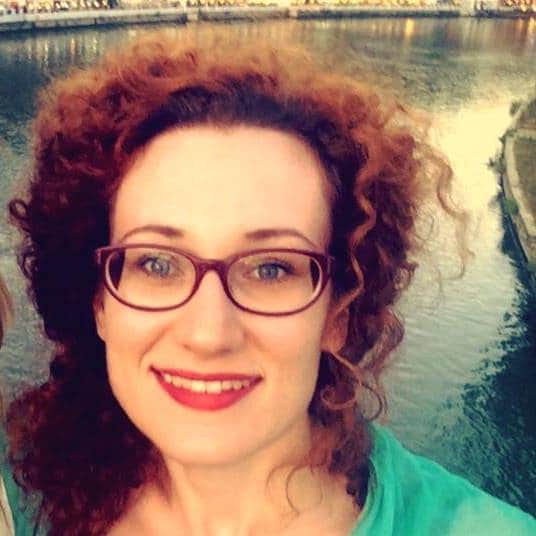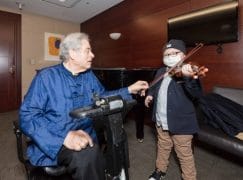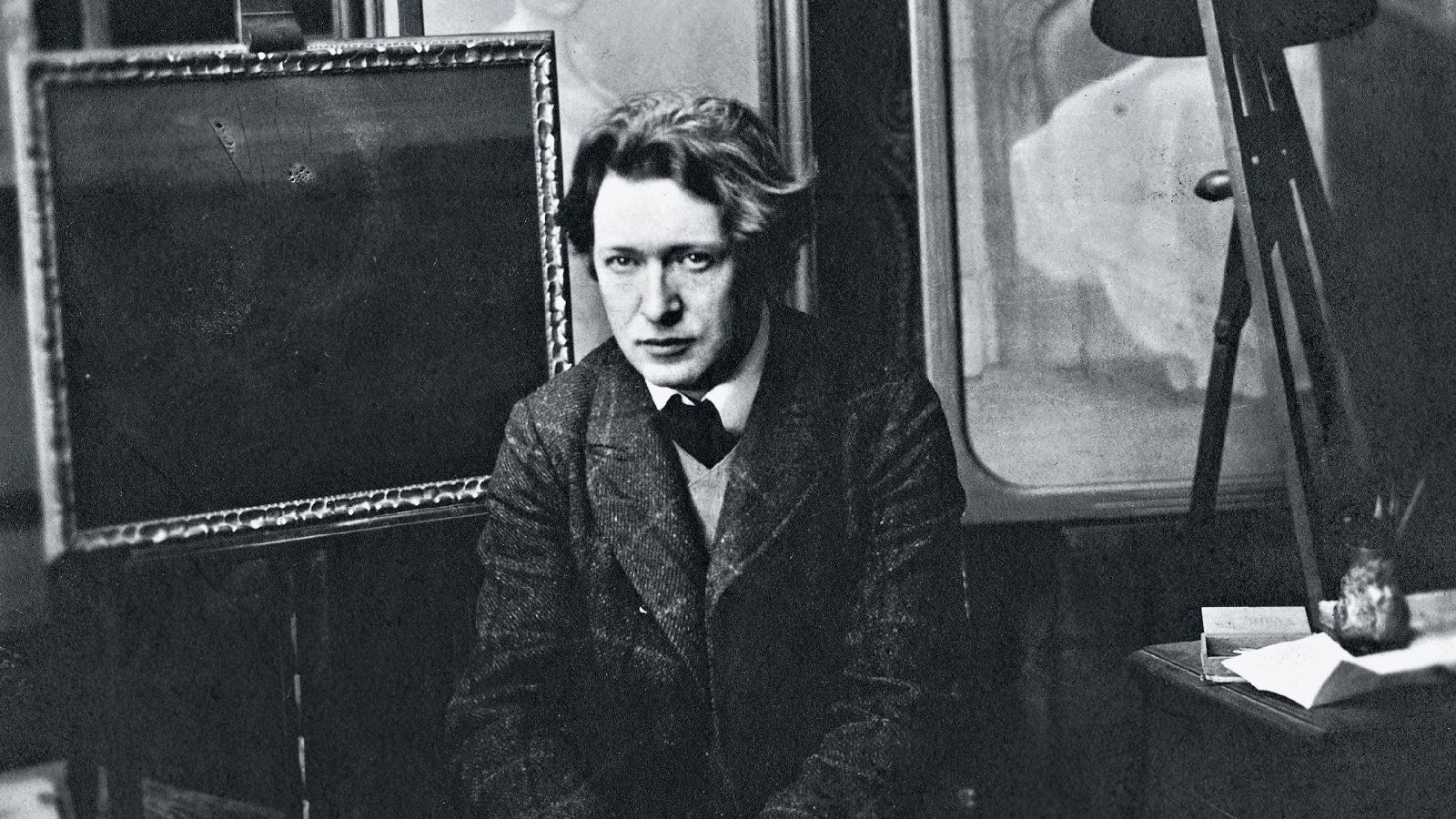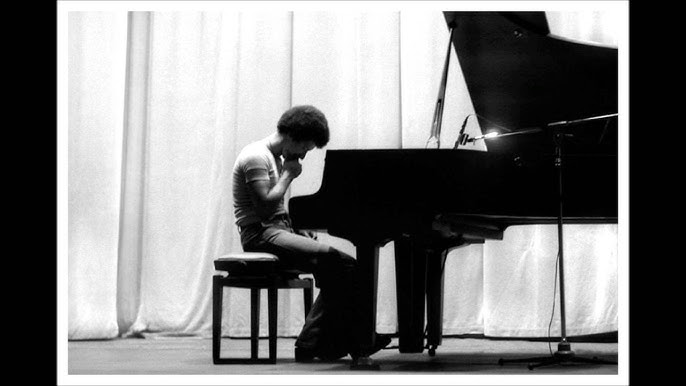Desperate times: We’re offering free viola lessons
mainThe Stoneleigh Youth Orchestra, which celebrates its 75th anniversary this year, ‘is on a mission to break the stigma of being a viola player by giving two young musicians the chance to learn for free’.
Or so they tell us.
Stoneleigh has purchased two violas which it will loan for free for one year with a view to inviting both players to join the orchestra. In addition to loaning the violas, the orchestra is offering six free individual lessons with viola teacher, Jennifer MacCallum, to help the players get started on their new instruments.







Kind of reminds me of the the fellow who leaves his accordion in an open car, hoping it’ll get stolen. When he returns, he finds three more accordions.
Seriously, the viola is my favorite string instrument (burns longer than a violin).
Six lessons? If they’re beginners, they MIGHT get to a Twinkle, Twinkle, Little Star level after a month and a half of weekly lessons. I hope they like it and their parents can afford to continue the lessons.
I like a good viola joke as well as the next person, but somehow I do not grasp the reason for the “desperate times,” “stigma,” and “or so they tell us” sneers. Youth orchestras are always hungry for violas because so many violists start as violinists and only discover the beauty of the viola later, often in early adulthood which is too late for school or youth orchestras. I took up the viola, and changed over to the viola section of my school orchestra, at age 17. Why? There were, shall we say, strategic reasons. The principal viola was VERY pretty. But then I was made principal viola, she was demoted, and she hated me.
So much for that plan.
There are difficulties and barriers for all instruments. I know many parents, including people of some means, who expressed shock at the cost of music lessons and at the cost of renting or buying even a low-end beginner’s instrument (and bow and case and strings and rosin and shoulder pad and tuning fork [am I showing my age with that one?] and metronome and let’s not forget sheet music). And then they express shock (if they never played an instrument themselves) at how slow the progress is.
So given a certain natural shortage of young violists who have yet to make the switch from violin, this makes total sense to me.
I would say this. I hope the parents do not expect a miracle after just the six free lessons. And personally I do think the “violin first” path to the viola is a good and valuable one. Having said that, playing the viola can be a ticket to getting jobs and opportunities because there are needs, while any one violinist is just another pebble on the beach.
And there is some glorious viola literature of course.
But I say good for Stoneleigh and Ms. MacCallum.
Now, have you heard the one about the violist who went to a piano recital?
Is there any reason why someone who can play the violin needs to learn anything new (apart from repertoire) to play the viola. And similarly for a violist to play music for the violin?
Yes, Saxon Broken, they need to learn a new clef. Violins use the treble or G clef; violas use the alto or C clef. It takes some getting used to – and is a bigger challenge for those whose early violin instruction was of the “play by rote” variety, because they see a note and think what finger it is on which string, and thus think more in terms of first, second, third or fourth finger on the first string, second string, third string and fourth string rather than E, A, D or G (or on the viola A, D, G or C) string. They are not thinking of what pitch or note it actually is. So learning a new clef is a challenge.
Some viola music – the very high notes – is written in the treble clef. So violists unlike violinists also have to learn to play and switch clefs at a moment’s notice.
Assuming that the viola is larger than the violin (not always the case with school instruments) and thus the length of the strings is longer, sometimes a little longer and sometimes much longer, there is also the matter that the fingers are spaced a tiny bit further apart to play the same notes.
Playing in tune means learning and mastering the most subtle and minute exactness in finger placement every time on the fingerboard. My own violin teacher (a pupil of Gingold, Piastro and Guilet) refused to even touch my viola – he said he had spent a lifetime nailing down the exact placement and separations for fingers on a violin fingerboard and was not going to risk impairing it by playing even one scale on my admittedly very large pattern viola.
Let this comment section be a collection of the best viola jokes. My personal favorite: what’s the common point between thunder and a violist’s fingers? They never strike in the same place twice.
How come violists never get hemorroids? Because all the assholes are in the first violin section.
Advertisement in the back of The Village Voice: “Experienced string quartet seeks two violins and a cello.”
Anon, thunder doesn’t strike. Lightning does. You must be a violinist, ’cause you think you’re right when you’re not.
Antoine Tamestit, Tabea Zimmermann, Matthias Buchholz, just listen !
Where is Stoneleigh Youth Orchestra?
London (Borough of Wandsworth)
Hi Barbara. Stoneleigh is in SW London. A really excellent and long-established youth orchestra. Lots of professional
Players started there, including principals in London orchestras. And I can’t resist plugging that my own daughter led it for a while.
And not just London orchestras. Sarah Willis of the Berlin Philharmonic played in the orchestra for a number of years